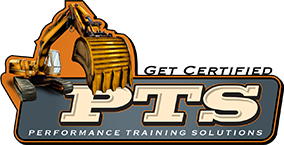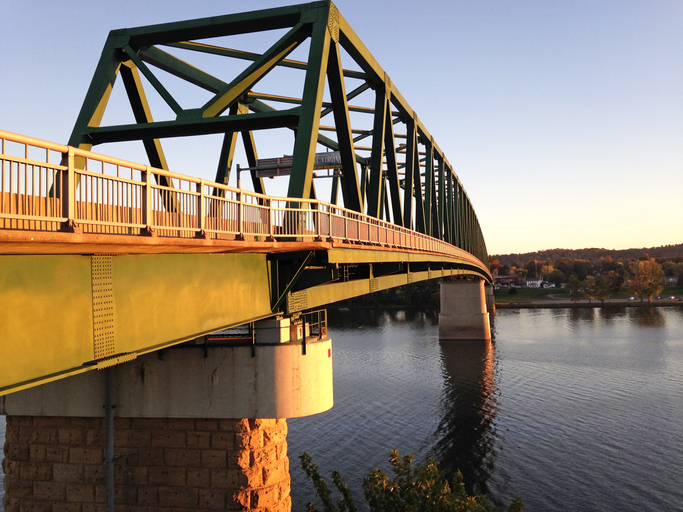With passage by the Senate in early August, President Joe Biden’s infrastructure bill and heavy equipment operators could be facing a productive and profitable future together. The massive bill, a $1 trillion infrastructure plan outlining projects in states from coast to coast, received bipartisan support in a final Senate vote on Aug. 10.
The bill includes funding for virtually every segment of the economy. It promises to jump-start major projects to rebuild American infrastructure from bridges and highways to railways and water services. Many of the proposals for spending in the bill will consist of and rely on work performed by heavy equipment operators across the country. Multiple segments of the heavy equipment industry have long pushed for the legislation — named the Infrastructure Investment and Jobs Act — and called it a “once-in-a-generation opportunity” to generate family-sustaining jobs for working Americans.
How do the infrastructure bill and heavy equipment operators relate to each other? What’s in the bill exactly? And how can you prepare to be in a position to take advantage of the proposals once the bill is enacted? Let’s start by delving into how the bill is broken down.
Rebuilding Roads, Bridges, the Energy Grid, and More
More than half of the bill’s scope ($550 billion) is earmarked as new spending, while the remainder comprises previously approved funding. The new funding segments of the bill include the following allowances.
Roads and Bridges
The bill sends $110 billion to rebuild the country’s aging highways, bridges, and roads. The state of the road infrastructure as a whole has been subpar and is getting worse. The White House contends that 173,000 miles of American roads and 45,000 bridges are in poor condition. According to the Biden administration, the nearly $40 billion designated for bridges alone is the single largest bridge investment since the construction of the interstate highway system.
Modernize the Power Grid
The bill will spend $73 billion to boost the reliability and resiliency of the nation’s energy grid as widespread power outages have become more and more common in recent years. It will also work to improve more environmentally friendly electricity sources, like clean hydrogen and carbon capture technologies.
Passenger and Freight Railways
The bill provides $66 billion to improve Amtrak’s rail service along the 457-mile Northeast Corridor as well as other routes. Like the bridge funding, the investment is the largest for the rail service since Amtrak was founded 50 years ago.
Broadband Expansion
With $65 billion for improving broadband access, the legislation aims to improve internet services for underserved segments, such as rural areas, low-income families, and tribal communities. Most of the money in this slice of the bill would be made available through grants to states.
Water Infrastructure
The legislation will spend $55 billion on water and wastewater infrastructure to improve the nation’s drinking water safety. There’s $15 billion to replace lead pipes across the country, and $10 billion is set aside to address contamination from polyfluoroalkyl substances (PFAS) — chemicals used to make Teflon, firefighting foam, water-repellent clothing, and other items.
Public Transportation
With $39 billion, the bill hopes to expand transportation systems, improve accessibility for people with disabilities, and provide money for state and local governments to invest in zero- and low-emission buses.
Airports
The bill earmarks $25 billion to upgrade runways, gates, and taxiways at airports. Provisions also include improvements for aging elements at air traffic control towers and terminal improvements.
Electric Vehicles
The bill spends $7.5 billion for electric vehicle charging stations and provides $5 billion to purchase hybrid and electric school buses. Both aim to help curb climate change by reducing the need for fossil fuel vehicles.
Heavy Equipment Operators Will Be Needed
The bill’s eventual passage will create massive opportunities for those involved in road building and repair, bridge construction, water line replacement, railway and airport infrastructure work, cable laying for broadband access, and much more. Heavy equipment will be a necessity for most projects, and operators for that machinery will be in high demand.
One study estimated the infrastructure bill could create 100,000 jobs — besides delivering consistent work to those already in the related fields — over the lifetime of the legislation. The bill is set to be spread out over eight years. Employees with heavy equipment operator training will be able to set themselves apart from others in the industries affected by the bill and will be positioned to take advantage of what will be nearly a decade of heavy infrastructure investment.
PTS Helps Bridge the Infrastructure Bill and Heavy Equipment Operators
Performance Training Solutions can get you ready, quickly, to transition into the role of a heavy equipment operator in order to capitalize on this opportunity. Our easily accessible and digestible three-week, 120-hour training courses will enable you to rapidly augment your credentials. Our small class sizes prioritize student involvement and allow for adjusting information delivery to suit your needs.
In the classroom, models and visual representations will be combined with textbook information. In the field, you’ll receive plenty of time in the seat — roughly 70% of your training time — to practice putting theories into action. PTS offers three heavy equipment training courses.
- Heavy Equipment Operator 1 is an entry-level course and covers the knowledge and skills required to obtain employment as a skid steer, wheel loader, compactor, backhoe, or articulated off-road dump truck operator.
- Heavy Equipment Operator 2 follows up on that initial training and opens the door to employment as an operator for bulldozers, scrapers, excavators, and motor graders.
- Our Mobile Crane Operations course, structured the same as the Heavy Equipment courses, will help you become an NCCCO certified crane operator and covers both mobile hydraulic telescopic boom swing-cab and fixed-cab cranes.
By initiating training now or in the near future, you’ll be equipped to apply those new skills immediately once projects powered by the bill start becoming a reality. With heavy equipment operator training, you’ll also access the already known benefits of this type of work — including a strong base pay rate, stability, and accessibility. Those advantages should only become more prevalent with the expected infrastructure investment.
Contact PTS today to schedule a tour and learn more about how the infrastructure bill and heavy equipment operators will be working in concert soon.
 Proudly Serving Veterans
Proudly Serving Veterans

